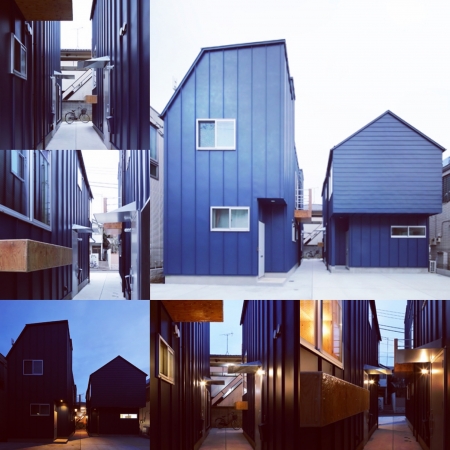形式から逃れる
窓を見ると部屋がわかる。道路から見た時の外観の窓の位置、大きさ、形で建築のプランは大体わかる。別に決まり事がある訳でもなく、窓の位置、大きさ、形を先に決めてからプランを考える訳でもないが、この部屋にはこのくらいの窓という暗黙の了解みたいなものは存在しており、それに沿う設計者がほとんどだから、見る人が見ればわかってしまう。
外観の窓でプランがわかることが良いのか悪いのかは別として、窓とプランが対になっており、そこに明快なわかりやすさがあることは良いことだとされている。混乱がないからで、人は周りの環境をいちいち個別に判断していたら、脳の容量がすぐにパンクしてしまうので、型式で物事を把握することは多分にあるだろう。
形式で把握すること自体は日常生活の中にもたくさんあり、そのおかげで人の脳は大事なことだけに集中できる。しかし、形式把握はどうでもよい扱いにも通じることであり、詳細に把握することを省いているのであり、そこから享受できることは何もない。
然らば、何か影響を与えたいと考えるならば、形式で把握されないような、形式から逃れる工夫が必要になる。
"Escape from form"
You can see the room by looking at the window. You can roughly understand the architectural plan by the position, size, and shape of the windows that look like when viewed from the road. There is no rule, and I don't think about the plan after deciding the position, size, and shape of the window first, but there is a tacit understanding of such a window in this room. Most of the designers follow it, so the viewer can understand it.
Regardless of whether it is good or bad to see the plan from the exterior window, it is said that it is good that the window and the plan are paired and that there is clear clarity. Because there is no confusion, if a person judges the surrounding environment individually, the capacity of the brain will be punctured quickly, so it is likely that you will grasp things by model.
There are many things to grasp in form in daily life, which allows the human brain to concentrate on what is important. However, grasping the format also leads to insignificant treatment, omitting grasping in detail, and there is nothing that can be enjoyed from it.
Then, if you want to influence something, you need to devise a way to escape from the form so that it is not grasped by the form.


